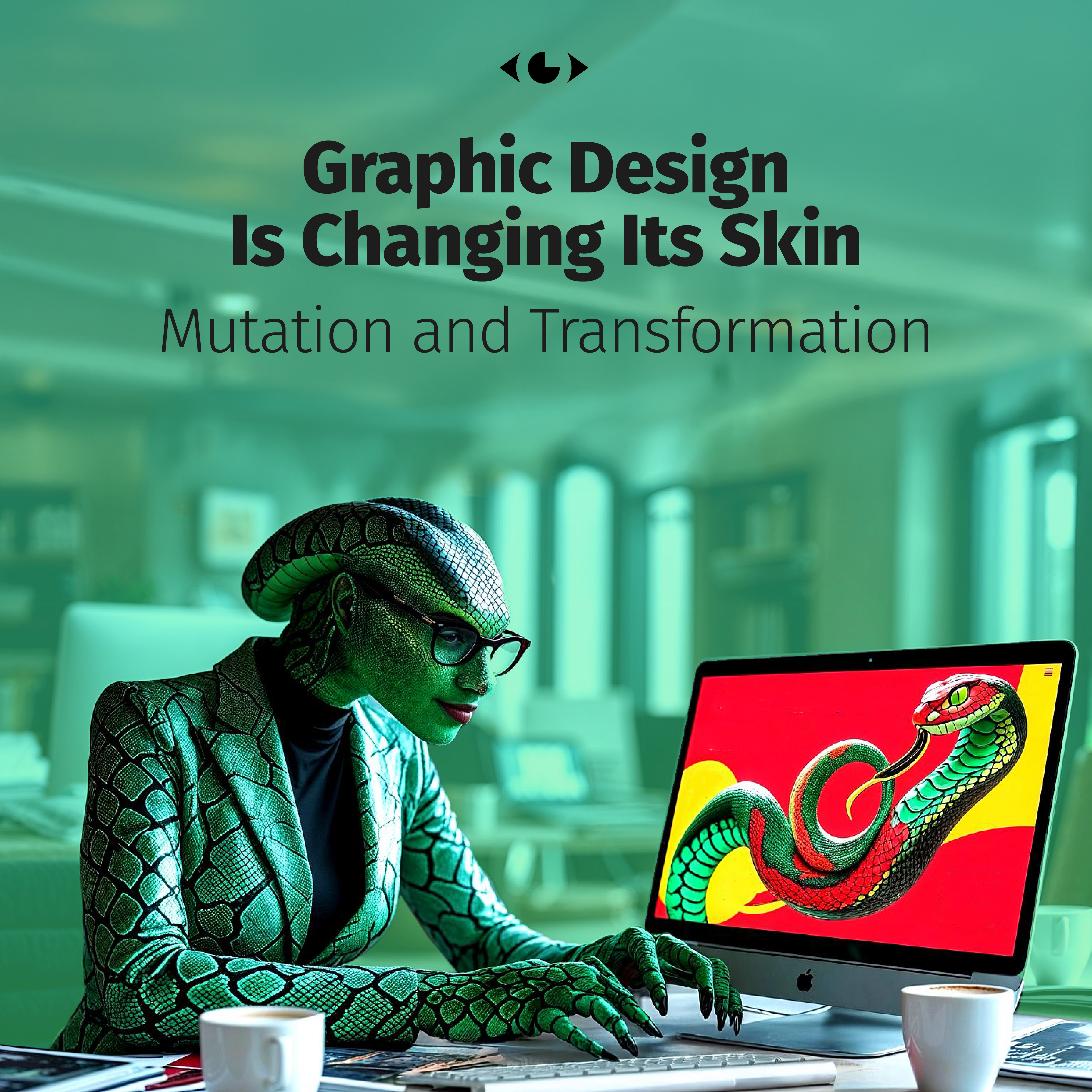Graphic Design Is Changing Its Skin

Graphic Design Is Changing Its Skin: Mutation and Transformation
The Year of the Snake signifies transformation and change. And today, the graphic design industry is at a pivotal moment, just as it was when laptops were first introduced in the 1980s.
With the advent of new technologies, the world of graphic design is undergoing a revolution, and artificial intelligence (AI) is redefining how we create, collaborate, and innovate.
For designers, this transformation raises a fundamental question:
- How do we integrate AI without losing our creativity and uniqueness?
- AI: ally or threat to creativity?
Contrary to popular belief, AI does not replace the talent of graphic designers – it amplifies it. It allows us to :
- Automate repetitive tasks and free up time for strategic design.
- Explore new ideas using generative algorithms and massive databases.
- Optimise precision and efficiency, fusing speed and human intuition.
67% of creative professionals believe that AI will transform their profession within 5 years (Adobe). In fact, 42% are already using it.
So how do we embrace it without compromising our identity as creatives?
Three strategies for integrating AI intelligently
- Redefine our design processes. AI can generate concepts in seconds that would otherwise take hours to design. But the designer remains the narrator: he gives context, emotion and intention to these visuals.
- Exploiting AI for inclusive design. Inclusivity is a key issue. AI makes it possible to analyse visual biases and propose designs that are accessible to all. Microsoft is already using this approach to broaden the impact of its products.
- Adopt a co-creation mindset. AI is not a competitor; it is a partner that enhances initial ideas, tests variations, and accelerates experimentation. However, the ultimate vision always belongs to the creative individuals.
Challenges and opportunities: how to adapt
Gaining the trust of customers
Some people see AI as a threat to the value of design. It is essential to explain how it enriches our work rather than replacing it.
Training designers for a new ecosystem
AI tools are evolving fast. Those who adopt continuous training will stay ahead of the market.
Establish ethical boundaries
AI must be used responsibly, to guarantee authentic design that respects human values.
AI: an opportunity, not a threat
Companies that put design at the heart of their strategy outperform their competitors by +32% (McKinsey).
AI will never replace human creativity, but it opens up new possibilities. It’s up to us designers to shape this new era.